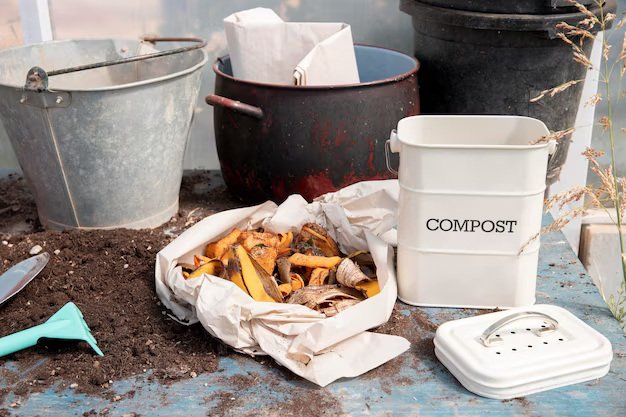London Kew Gardens Opens Carbon Garden to Raise Climate Awareness
On July 25, 2025, the Royal Botanic Gardens at Kew in southwest London unveiled its most ambitious project in years: the Carbon Garden, a permanent installation designed as a living education on carbon, climate change, and resilience. It combines striking visual symbolism with the latest botanical science to communicate the invisible forces shaping our planet. At the entrance, herbaceous planting forms bold stripes, from cool blues shifting to fiery reds — a living homage to the famous climate‑stripe visualisation created by Professor Ed Hawkins, representing decades of rising global temperatures and turning abstract data into vivid horticultural art. According to Kew scientists, this design helps visitors immediately grasp the accelerating pace of warming.
Over four years in conception and creation led by garden designer Richard Wilford and Mizzi Studio’s Jonathan Mizzi, the garden is structured around interconnected zones: a dry garden of Mediterranean, drought-tolerant species, a rain garden and bioswale capturing water and filtering runoff, and an exposed soil profile including a fossilised coal seam to drive home where much of Earth’s carbon originates. At its heart stands a pavilion inspired by fungal fruiting bodies, built from low‑carbon materials like flax composite and locally sourced timber, and featuring a tilted canopy that channels rainwater into planted ground beneath.

From Research to Real Planting
Kew’s Carbon Garden is far from decorative. It is rooted in ongoing scientific research at Kew’s Wakehurst site and across its Nature Unlocked programme. Those projects focus on how ecosystems—grasslands, woodlands, soil networks, and particularly plant-fungal symbiosis—sequester carbon and build resilience to climate stress. For example, recent research has shown that mycorrhizal fungi transfer and store around 36% of annual global fossil-fuel emissions underground, channelling carbon from plant roots into long-term soil reservoirs. This remarkable carbon partnership not only helps plants thrive but also stabilises soils—a powerful insight symbolically embedded in the pavilion’s fungal-inspired design.
Kew’s experimental plantings include 35 newly planted trees chosen for their resilience to projected climate conditions in London by the 2090s—species such as cherry hackberry, Montezuma pine and spoon oak from warmer regions that models project will suit future climates in southern England. In addition, the dry garden includes hardy species like lavender, agave, and yucca, demonstrating plants that could thrive in hotter, drier summers that may become the norm by mid‑century. Kew is also evaluating deep‑rooted grasses and prairie species in Wakehurst areas, some of which now comprise more than 85 established species, showing exceptional biodiversity and strong carbon‑capture performance.
Voices from the Garden and Wider Community
Visitors and community members have already shared stories of how the Carbon Garden connects data with personal impact. Amanda Cooper, a doctoral researcher who helped develop the garden’s tree selection, emphasises that “planting more such trees would be part of the solution to tackling climate change. … By reestablishing woodlands and halting deforestation, we can make a dent in what is being emitted”—a starting point towards change, acknowledging that it can’t replace decarbonisation of energy systems entirely.
Richard Wilford describes the project as a fusion of “scientific insight with thoughtful design”: not just a display, but a prompt to action. He hopes visitors leave not only informed, but inspired to take steps in their own lives.
At the institutional level, Kew’s Executive Director of Gardens, Raoul Curtis-Machin, is driving a refreshed climate-responsive ethos. He advocates a more experimental and agile approach—expanding planting beyond traditional varieties, improving interpretive signage, and embedding climate-resilient species into Kew’s heritage horticulture.
One visitor recounted how strolling past the climate‑stripe borders, and then encountering the coal seam and rain‑garden features, transformed abstract carbon emissions into something tangible and urgent: the fossil layer beneath their feet, the thirsty dry‑garden plants—each element told a story of change, threat, and hope. This fusion of narrative and tangible elements is precisely what educators and designers had intended.
Why This Matters—and How You Can Take Part
Today’s climate crisis demands more than data and warnings—it requires immersive understanding, local action, and scalable solutions. The Carbon Garden meets this need. Its visitor numbers—over 2.5 million annually at Kew—afford an enormous public platform to connect people with nature-based climate solutions rapidly and viscerally.
Data from broader urban gardening studies shows that even small, community or backyard gardens can contribute meaningfully—cooling neighbourhoods, enhancing biodiversity, and storing carbon—though only when carefully designed and managed. A University of Michigan study, for instance, found that low‑tech urban produce gardens may have a carbon footprint six times greater than conventional farming unless managed thoughtfully with appropriate crop choices and design planning.
By contrast, Kew’s Carbon Garden offers a model: combining native and deep‑rooted perennial plantings, drought‑resilient species, soil health, rainwater systems, and diversity over uniformity—all shown in practice to increase both carbon capture and climate adaptation in real gardens and ecosystems.
Statistics Table
Here’s a snapshot of key figures drawn from reputable sources used in the garden’s design and climate‑health concepts:
| Metric | Context |
|---|---|
| 6,500 plants in the Carbon Garden | Designed to represent carbon cycles and resilience |
| 35 new climate‑resilient trees | Selected for projected future conditions in London |
| ≈ 75 % of fossil fuel CO₂ absorbed by mycorrhizal fungi | |
| ≈ 2.5 million annual visitors to Kew | Scale of educational reach |
| 6× higher carbon footprint of poorly managed urban gardens | From UMich research on urban agriculture |
Actionable Advice: Cultivating Your Own Carbon‑Aware Garden
If you’d like to apply lessons from Kew’s Carbon Garden in your garden, community space, or balcony, here are real steps grounded in research and practice:
- Choose deep‑rooted, perennial plants (prairie grasses, lavender, yucca, bearded iris) and diverse species rather than monocultures. These improve soil carbon storage and resilience.
- Include drought‑tolerant and heat‑resilient species if you live in areas projected to warm—some southern European or Californian natives are ideal.
- Use rain gardens or bioswales to manage stormwater naturally, prevent runoff, and reduce strain on urban drainage.
- Support soil biodiversity by using organic compost, avoiding synthetic fertilizers, and encouraging fungal activity—nature’s own carbon helpers.
- Integrate climate storytelling elements—for example, plant bands inspired by climate stripes, signage explaining carbon, wood chips revealing soil layers—make abstract issues tangible at home.
- Scale collaboration: engage community gardens, schools, or local authorities. Even modest green spaces can build climate awareness and resilience if well-planned.
Conclusion
Kew Gardens’ Carbon Garden is a milestone in climate communication and garden science. By blending research, design, and lived experience, it creates an immersive environment that educates, inspires, and equips visitors with tangible tools for local action. The garden’s combination of symbolic planting, interactive infrastructure, expert-led narrative and biodiversity-minded design models how gardens can be both beautiful and active agents of change.
Whether you visit Kew in person or take its lessons into your own backyard, the Carbon Garden shows how thoughtful horticulture can become a powerful climate tool. It’s not just a display—it’s a call to transform how we live with carbon. Now is the moment for gardeners, educators and communities everywhere to follow its example: plant deep, think diverse, conserve water, enrich soil, tell the carbon story—and grow climate resilience from the ground up.







